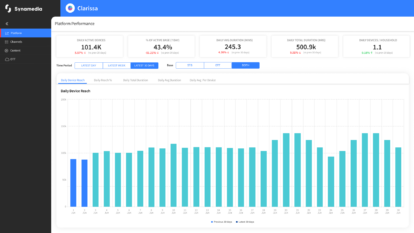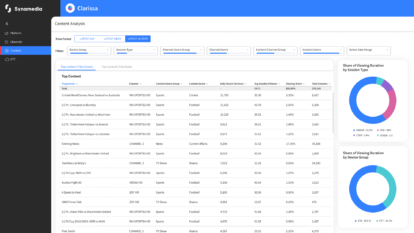In our blog, Beyond Broadcast: New approaches for localised digital advertising, we looked at how cloud connectivity enables targeted ads on broadcast devices and networks. Although these approaches primarily focused on localised or channel-based targeting, data-driven advertising methods such as programmatic are also possible.
Traditionally, broadcasters have relied on their direct sales teams to negotiate deals, exercising full control over brands and budgets. However, as a significant portion of viewers transition to streaming, broadcasters are facing a steady decline in ad revenues. This shift has left broadcasters with a dilemma: whether to adhere to traditional media sales techniques or embrace advanced technologies like addressable advertising and programmatic trading.
In this blog, we will examine how adding linear programmatic can provide four major benefits that can enhance an addressable strategy for broadcast.
1. More advertisers mean more demand
By opening up some inventory to programmatic, broadcasters can gain access more sources of demand through DSP’s and SSP’s. This brings a wide variety of advertisers, most of whom may not currently be buying broadcast ads. However, by segmenting the broadcast inventory, these new advertisers can purchase just the audiences that are relevant at a price point that works for their ROI.
2. Transacting Programmatic is simpler
Most CTV advertisers are comfortable transacting programmatically as it provides transparency with minimal overhead. Programmatic deals are based on a standardised, automated bidding process that ensures the highest qualified bid is awarded the ad opportunity, and hence there is no need to enter individual contract negotiations.
3. All campaigns can be optimised
For more niche content, programmatic bids may result in a higher return than direct-sold campaigns. By comparing all bids as part of a unified ad decisioning system, broadcasters can achieve optimal business outcomes in each situation (e.g., time, content, budget, etc.). Programmatic deals can also be used in place of non-revenue generating cases, such as house campaigns or slates, thereby creating new revenue streams.
4. Programmatic can be enhanced for better experiences
To ensure that linear programmatic preserves a broadcast-like viewing experience, enhancements can be applied that include capabilities such as:
- Private marketplace, which allows broadcasters to establish deals with approved buyers and set floor prices and budgets
- Frequency capping, which limits a viewer from seeing the same ad too frequently, reducing ad fatigue
- Clash management, which prevents ads from competing brands being shown in close proximity to each other
- Category blocking, which excludes certain types of ads from being served which are inappropriate for a given opportunity
- Near real-time reporting for all connected devices, which is used to optimise targeting, delivery, and prioritisation across all campaign types
So why aren’t more broadcasters embracing linear programmatic?
The biggest challenge is a perception problem. Programmatic, which came of age with social media platforms like YouTube, have a reputation of being lower quality and lower value. However, as ad-supported streaming is becoming the predominant business model for premium TV companies like Netflix, Amazon, and Disney, and advertisers are migrating to these channels, driving up CPMs and expectations.
This market shift is resulting in enhancements to the technical and commercial ecosystem that make the use of linear programmatic extremely beneficial without the drawbacks that are typically associated with it.
Why could Synamedia Iris be the right platform for you?
Synamedia Iris is a flexible and modular addressable advertising platform that can work with existing ad tech solutions to help broadcasters not only deliver new services and features, but also move them toward a unified future that brings the best of broadcast and digital together.
If you’d like to learn more about how Synamedia is helping broadcasters develop their addressable strategies, make sure to register for our webinar: Register now
About the Author
Jomith George is an experienced Senior Lead Product Manager at Synamedia, where he manages parts of the Synamedia Advanced Advertising product portfolio. He makes strategic decisions to ensure competitiveness in the market and collaborates with architecture and engineering teams to drive product success. Jomith also oversees documentation efforts and supports business development activities. His expertise lies in ad tech, video advertising, programmatic advertising, broadcast advertising, and more.












